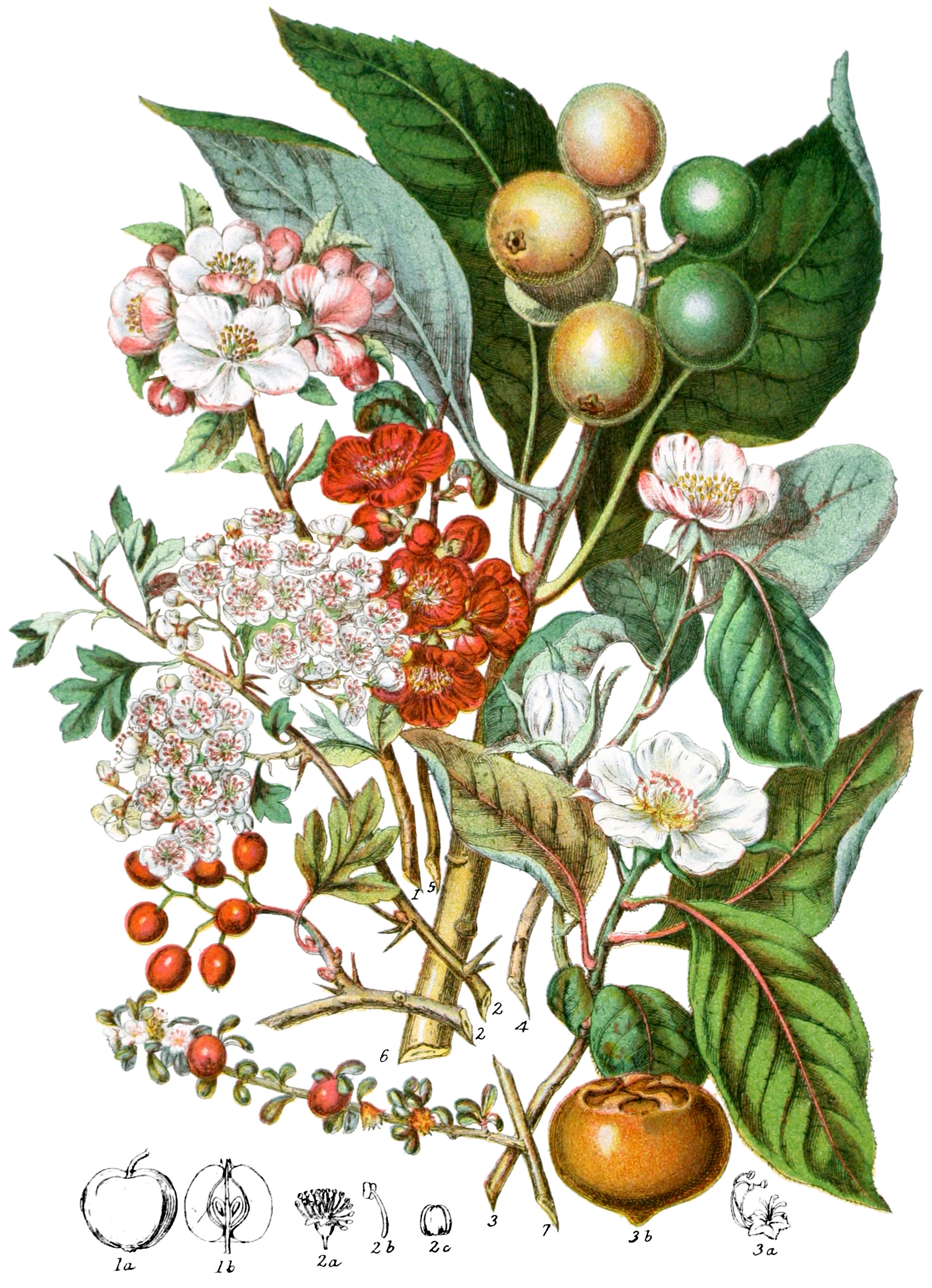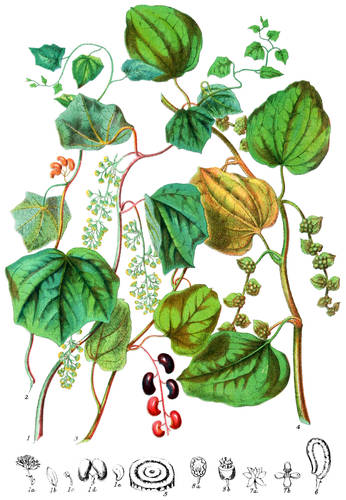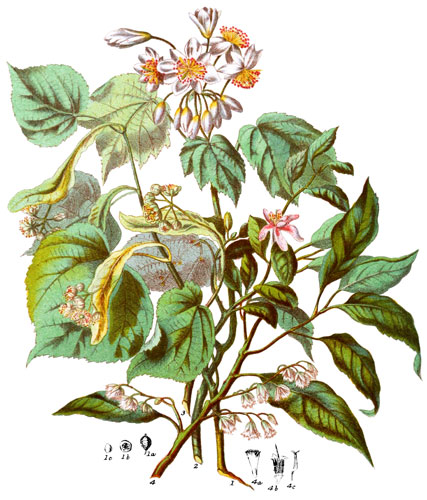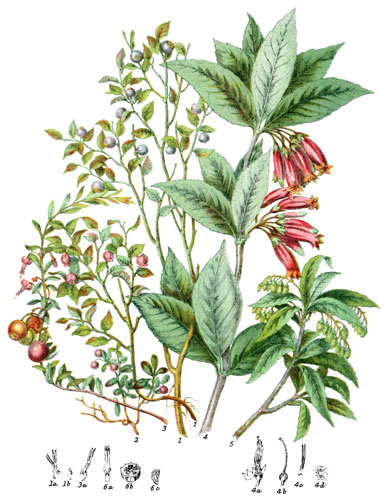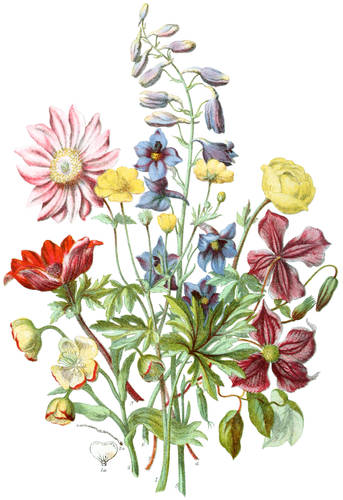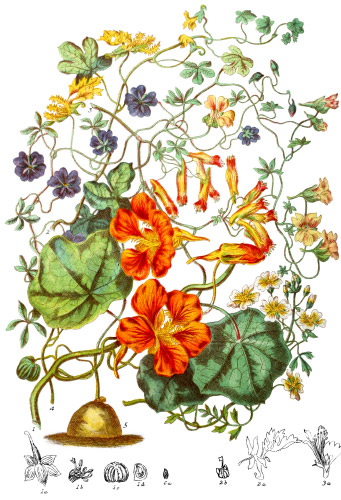Key characteristics
Trees and shrubs. The leaves are alternate, simple or compound, with stipules. The flowers are solitary, or in terminal clusters, usually white or pink; the calyx is adherent, five-toothed, the odd segment placed behind. The petals are five, clawed at the base, inserted into the calyx, the odd petal placed in front. The stamens are of indefinite number, inserted in a ring in the calyx. The ovaries are from one to five, adhering more or less to the sides of the calyx and to each other; the styles are from one to five, the stigmas simple; the fruit is one to five-celled, the seeds solitary, without albumen.
The Apple tribe is closely allied to the Rose tribe, but is distinguished by the fruit being a fleshy pome, and the seeds placed side by side, instead of one over the other.
Beautiful flowers and eatable fruit are the chief characteristics of this Tribe. Pears contain small stony concretions in their cellular substance.
Select plants in this order
Not all plants listed are illustrated and not all plants illustrated are listed.
- Pyrus, Pear, and Apple are names derived from the Celtic; the fruits were cultivated by the Greeks and Romans; the varieties have been exceedingly increased since those times, but all have been derived from Pyrus Malus (1), the original stock. The juice of the wild apple or crab, in its natural state, is extremely sour and austere; as verjuice it serves some useful purposes. The apple is the most valuable fruit grown in Britain; and it attains to great perfection in this country, being suited to various soils and situations, thriving as far north as the Shetland Isles: the climate of America is also very favourable to it. The various uses to which apples are applied render them of much importance. Cider is made from the fermented juice of the sharp and strong-flavoured kinds, chiefly in the counties bordering the Bristol Channel.
- P. communis, the Pear, is frequent in Sussex and other parts of England. The wild fruit is of no value; but all the delicious pears of gardens have been produced from it by grafting and cultivation. Some kinds in France and the north of Italy are of very superior quality: they also thrive in still hotter climates, for Marco Polo relates, that he found in the market of Ningpo “uncommonly large pears, weighing each ten pounds, white in the inside and very fragrant.” The pears of Peshawur, in India, are also celebrated. Perry, made of the juice of pears, is considered a very delicate kind of wine. The orchards are principally in Worcestershire, and the arms of the City of Worcester are three pears.
- P. torminalis, the wild Service-tree, is frequent in parks and hedges in Sussex; the clusters of small oval fruit are sometimes gathered, and sold in village shops: after having been slightly touched by frost, they have an agreeable acid flavour.
- P. domestica is found occasionally in the hilly woods of Cornwall, and is the only native species in Iceland; it is of slow growth, bearing no fruit till it arrives at a considerable age.
- P. aucuparia, Mountain-ash, or Rowan-tree, is supposed to have been one of the sacred trees of the Druids, and was long afterward an object of superstitious veneration in Scotland. In many parts of Germany it takes the place of Plum-trees by the roadside; and as there are no hedge boundaries to the extensive fields, it adds considerably to the beauty of the scene, especially when the abundant scarlet berries adorn the trees. The bark is useful in tanning, and a strong spirit is distilled from the fruit.
- P. aria, the white Beam-tree, name from the use made of the wood, is a native of chalk and limestone hills in Scotland and Ireland; it may be easily recognised by the white cottony down of the under surface of the leaves.
- The wood of nearly all the species of Pyrus is hard, and fine-grained.
- Cratægus is the genus of the tribe to which we are most indebted for the embellishment of our fields, parks, and gardens.
- C. Oxycantha (2) merits its general admiration from the picturesque form of growth, as well as beautiful spring flowers, and red haws in autumn, which in mild seasons sometimes remain on the branches throughout the winter.
- The fruit of C. azarolus, and C. odoratissimus, is eate in the Crimea.
- C. crus-galli, the cockspur thorn, shows very clearly the transformation of leaves and undeveloped branches into spines; those on the young branches are only soft and leafy, on the branches of the previous year they are become hard spines.
- Mespilus (3) affords a remarkable instance of a fruit not being eatable until in a state of incipient decay: the cells of the fruit are of a singular bony consistency, and the leafy calyx remains unclosed at the top.
- M. pyracantha is a favourite evergreen shrub from the south of Europe.
- Cydonia vulgaris (4) bears a fruit of peculiar flavour; the mucilaginous seeds are used medicinally.
- Cydonia (formerly called Pyrus) Japonica (5) has fruit about the size of a walnut in Japan.
- Eriobotrya (6) is downy on the flower branches; the fruit is said to resemble the Mango in taste, and is esteemed in its native country.
- Cotoneaster (7) is a genus belonging to Europe and Nepal; the stalks are usually clothed with cottony down.
- Photinia dubia yields a red dye for cotton in Nepal.
Locations
This Tribe is found plentifully in Europe, Northern Asia, the mountains of Nepal, and North America; it is rare in Mexico, exists in Africa only on the northern shore, is unknown in Madeira, as well as in the whole southern hemisphere; a solitary species belongs to the Sandwich Isles.
Legend
- Pyrus Malus, Apple or Crab-Tree. Britain.
- Fruit.
- Section.
- Cratægus Oxycantha, Common Hawthorn. England.
- Stamens and Pistils.
- Stamens.
- Seed.
- Mespilus Germanica, Eatable Medlar. Germany.
- Pistils and Stamens.
- Fruit.
- Cydonia vulgaris, Common Quince. Cydon, Crete.
- Cydonia Japonica, Japan Quince. Japan.
- Eriobotrya Japonica, Loquat. Japan.
- Cotoneaster microphylla, Small-leaved Cotoneaster. Nepal.
Explore more
Posters
Decorate your walls with colorful detailed posters based on Elizabeth Twining’s beautiful two-volume set from 1868.
Puzzles
Challenge yourself or someone else to assemble a puzzle of all 160 botanical illustrations.
